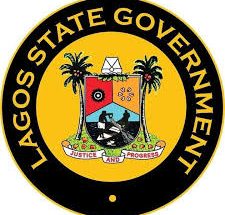Research shows that dye has numerous uses and benefits. In an interview with journalists recently, the Director-General Raw Materials Research and Development Council (RMRDC) Professor Hussain Doko Ibrahim, disclosed that about 95% of the dyes used locally are imported. And that the total cost of its importation in 2022 was estimated at N40 billion. However, the Council is collaborating to boost the Nigerian economy. BINTA SHAMA reports.
Value of eco-friendly products
The growing consciousness about organic value of eco-friendly products has generated renewed interest of consumers towards the use of natural dyes in textiles, cosmetics, food and pharmaceutical industries. Natural dye is defined as any dye, pigment or any substance derived from natural sources such as plants, minerals and animals. They are renewable and sustainable bio-resource products with minimum environmental impact. The main sources of natural dyes are various parts of plants such as roots, stems, seeds, barks and leaves and biological sources such as fungi, snails and insects.
Natural dyes were the main source of dyeing before the advent of synthetic dyes. However, in the last ten years, the application of natural dyes has increased globally due to environmental laws established by different countries. This is mostly due to hazardous effects of synthetic dyes on human health based on their carcinogenic or mutagenic activities and the contamination of the environment. These have led the industries to search for less harmful sources of dyes most especially as natural plant dyes which have biological benefits. As a result, the natural dyes market segment is becoming increasingly important in global financial markets.
The global natural dyes market is anticipated to generate revenues of approximately $5 billion by 2024, growing at a Compound Annual Growth Rate (CAGR) of around 11% during 2018-2024. The European market of natural dyes and pigments was valued at USD 1 billion in 2021 and the plant-based dye and pigments represented 70% of this. France, the third largest European producer of naturally derived dyes and pigments, after Germany and Italy, has a production value of 49.4 million euros which is about 9% of the entire production of natural dyes and pigments in the European market.
To overcome these constraints, integrated R & D have been initiated in many parts of the globe. Research and Development have shown that some plants are excellent raw materials for producing natural colorants in view of the high percentage of water-soluble dyes or plant pigments they contain. Some of the dye-producing plants have been observed to possess a wide spectrum of utilization and as such, are being developed as multifunctional plants that can be cultivated and exploited in sustainable ways for use, most especially in the production of active ingredients in the pharmaceutical and cosmetic industries and in food production. Some natural colorants, such as carotenoids, flavonoids, hydroxyl-anthraquinones, etc., extracted from plants are promising dyestuffs and are becoming popular in a wide range of industries. They are widely used as coloring bioactive substances in several manufactured products including textiles, cosmetics, food, pharmaceutical, plastics, paint, ink, paper and electronics (e.g., for dye-sensitized solar cells) industries due to their optical properties and antioxidant, antibacterial, antiviral and antifungal activities. Thus, the coloring properties as well as the added nutritional or therapeutic potentialities of some plant-based dyes and pigments make the biomaterials important agricultural commodities.
In Nigeria, the cost of importation of dyes is increasing annually as about 95% of the dyes used locally are imported. The total cost of importation in 2022 has been estimated at 40 billion naira. According to Volza’s Nigeria Import Data, the top 3 exporters to Nigeria are Netherlands with 7,592 shipments followed by Germany with 6,450 and United States spot with 4,904 shipments respectively. The top 3 Product Categories of Colouring dyes Imports in Nigeria are HSN Code 32041900: 32041900, HSN Code 32041990: 32041990 and HSN Code 32050000 : 32050000.
To reduce foreign exchange expenditure on dye importation, there is need to develop the natural dye production in the country. This also has health benefits, export and environmental conservation potential. The present high level of importation is due to the fact that the development of natural dyes in Nigeria has been affected by tedious extraction process and inadequate supply of dye plants since most of the plants are growing in the wild.
What has RMRDC done to advance the production of dye?
To obviate this development, the Council initiated a project aimed at developing natural dyes production from plants in 2017 titled “Development of Natural Dyes for the Textile Industries Through the Indigo Dye Plant” Among the objectives of the project are to identify dye producing plants in Nigeria, promote in and ex-situ conservation of the plant species and to develop an indigenous process technology for Dye Extraction Equipment in order to remove the drudgery associated with manual production of dyes. The project emphasized the necessity of investigating sources of dyes from the rich plant diversity of the country. Investigations carried out indicated that dye plants are found in a wide range of vegetation types, growing areas and climates, like in the Mangrove, Swamp and Rainforest zones of Nigeria and in the Guinea, Sudan and Sahel savanna ecological zones. The sustainable development and exploitation of selected dye plants would make it possible to palliate certain diseases and environmental pollutions induced by the use of artificial colorants, to improve the agricultural income of the local populations and to create opportunity for investors in the area of natural dyes production.
To achieve this, the project is being carried out in phases. First, the inventory all the dye-producing plant species used in major dye centres in Nigeria using Kano, Gombe, Osun and Oyo as pilot states was carried out. Second, to facilitate the extraction of dyes from the candidate plants, the Council designed and fabricated a 5-10kg per day indigo dyestuff extraction equipment to reduce the drudgery associated with manual dyestuff production. The fabrication of the dye extraction process machine commenced in 2018 and was successfully completed in November, 2020 at the Department of Textile Engineering, Ahmadu Bello University, Zaria. Third, the optimization of the extraction process of the dyestuff from various plants was carried out using the fabricated dye extraction machine with the aim to optimize and standardize dye extraction process from the different dye-plants.
What are the sources and benefits of this dye?
Study, has revealed that among the plants so far identified for natural dyes production is Lawsonia inermis (Henna). The leaves have been extensively used for centuries in parts of Africa as dye for nails, skin, hands, hair and textiles. Complementarily, henna is also used in treating skin problems, headache, jaundice, amebiasis and enlargement of the spleen. The major pigment in henna leaf is lawsone [2-hydroxyl-1,4-naphthaquinone (C10H6O3)], as it has fast-dyeing properties.
The chemical constituents’ include β-sitosterolglucoside, flavonoids, quinoids, naphthalene derivatives, gallic acid, coumarins, and xanthones. Another candidate of importance is Pterocarpus osun which occurs throughout the tropics. The wood of Pterocararpus osun contains 16 % of red colour pigments which is soluble in organic acid and alkali. Other candidate plants observed so far are Hymenocardia acida, Philenoptera cyanescens (liana indigo), Indigofera tinctoria, Khaya senegalensis and P. cyanescens which is locally used as a source of indigo in the manufacture of batik.
Four major dyeing centres in Oshogbo, Iseyin, Kano and Gombe, have been visited to assess the status of indigo dye production and utilization among the dyers with the view to identify and address the challenges limiting the productivity of the operators. With the advent of the dye extraction plant, the drudgery nature of manual processing is being addressed.
Domestication and development of identified dye producing plant species is also being addressed. Although, the project is ongoing, substantial progress had been made. Interested farmers are welcome to key into the project.
The Council has initiated a platform for the establishment of plantations of candidate plants to promote their sustainable production through its plantation establishment of economic indigenous plant species in Nigeria programme. This project would save the country billions of naira expended on dyes importation annually. Furthermore, investors are encouraged to visit the Council’s website for collaboration and more information on the project.




